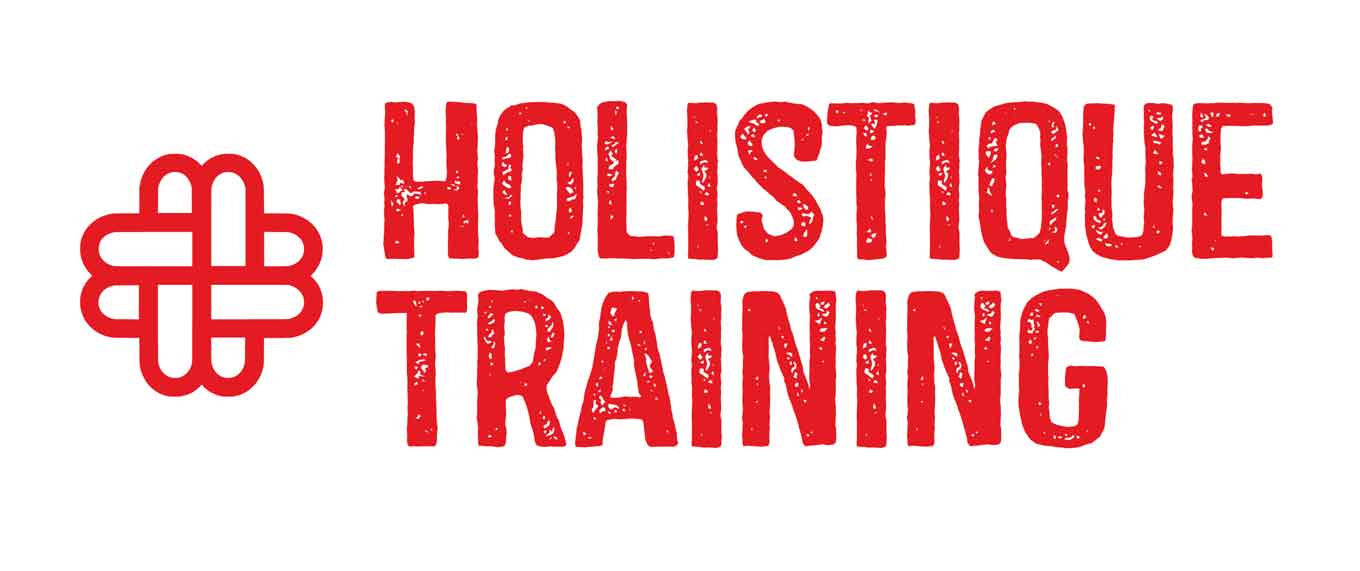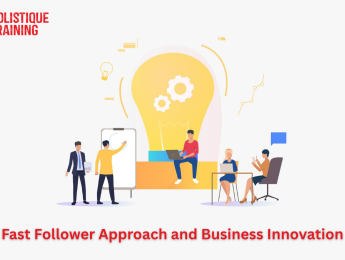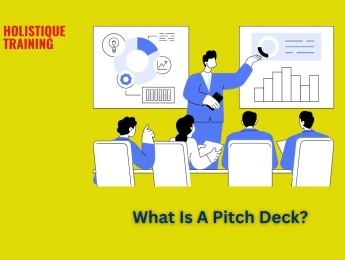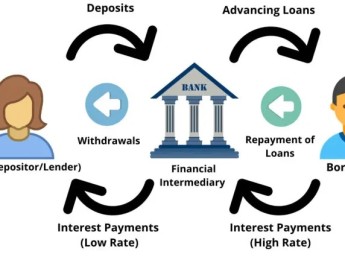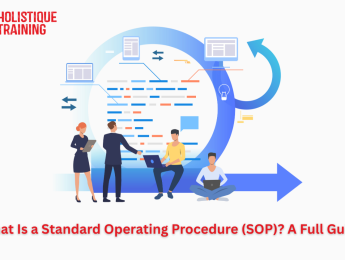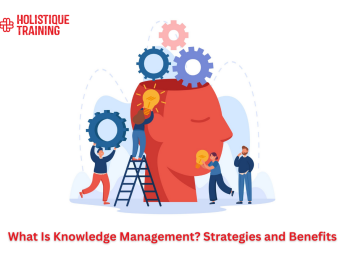- Table of Contents
- Introduction
- What is the Fast Follower Approach?
- Principles of the Fast Follower Approach
- 1. Observation and Analysis
- 2. Agility
- 3. Incremental Innovation
- 4. Risk Mitigation
- 5. Collaboration and Networking
- 6. Customer-Centric Focus
- 7. Strategic Marketing
- Pros and Cons of the Fast Follower Approach
- Pros
- Cons
- How to Implement the Fast Follower Approach
- 1. Conduct Market Research
- 2. Develop a Unique Value Proposition
- 3. Build Agility into Your Organization
- 4. Invest in Marketing and Branding
- 5. Leverage Partnerships and Collaborations
- 6. Monitor Performance and Adapt
- 7. Continuous Learning and Improvement
- Fast Follower vs. First Mover: Key Differences
- 1. Risk Tolerance
- 2. Innovation Strategy
- 3. Market Timing
- 4. Resource Allocation
- 5. Brand Perception
- Pros and Cons of Being a First Mover
- Pros
- Cons
- Which Approach is Best for You?
- 1. Market Dynamics
- 2. Resource Availability
- 3. Risk Tolerance
- 4. Competitive Landscape
- 5. Innovation Capability
- 6. Customer Engagement
- Conclusion
Introduction
Innovation is a cornerstone of business success, often determining the trajectory of a company’s growth and market relevance. While many organizations strive to be pioneers in their fields, the fast follower approach has emerged as a compelling strategy that balances risk and reward. This blog post will explore the concept of the fast follower approach, its principles, advantages, and disadvantages, and how businesses can effectively implement this strategy. Additionally, we will compare the fast follower approach with the first mover strategy, examining the pros and cons of each to help you determine which approach might be best suited for your organization.
What is the Fast Follower Approach?
The fast follower approach refers to a business strategy where a company observes the innovations and strategies of first movers—those who are the first to enter a new market or introduce a novel product—and then quickly adopts and improves upon those ideas. Rather than investing heavily in research and development to create something entirely new, fast followers capitalize on the groundwork laid by others. This strategy allows them to learn from the successes and failures of first movers, reducing the risks associated with innovation.
Fast followers are not simply imitating; they are enhancing existing concepts, tailoring them to better meet customer needs, and often bringing them to market more efficiently. This approach can be particularly effective in industries characterized by rapid technological change or shifting consumer preferences, where the cost of being wrong can be high.
Principles of the Fast Follower Approach
The fast follower approach is grounded in several key principles that guide its implementation and effectiveness. Understanding these principles can help organizations leverage this strategy to maximize their innovation potential while minimizing risks.
1. Observation and Analysis
A fundamental principle of the fast follower approach is the commitment to thorough observation and analysis. Fast followers must continuously monitor the market landscape, paying close attention to the innovations introduced by first movers. This involves not only tracking product launches but also analyzing consumer reactions, market trends, and competitor strategies. By gathering insights from various sources, including customer feedback, sales data, and industry reports, fast followers can identify successful practices and potential pitfalls. This analytical mindset enables them to make informed decisions about how to adapt and improve upon existing products or services.
2. Agility
Agility is crucial for fast followers, as the business environment is often characterized by rapid changes and evolving consumer preferences. Companies adopting this approach must cultivate a culture that values quick decision-making and responsiveness. This agility allows fast followers to pivot swiftly in response to market dynamics, seizing opportunities as they arise. For instance, if a first mover introduces a product that gains traction, a fast follower can quickly mobilize resources to develop a similar or improved offering. The ability to act decisively can be a significant advantage in competitive markets where timing is critical.
3. Incremental Innovation
Rather than striving for groundbreaking innovations, fast followers focus on incremental improvements. This principle emphasizes the importance of refining and enhancing existing products or services based on insights gained from first movers. Fast followers can analyze what works well and what doesn’t, allowing them to make targeted enhancements that resonate with consumers. For example, if a first mover launches a new smartphone with unique features, a fast follower might introduce a similar device with improved battery life, better camera quality, or enhanced user experience. This approach not only reduces the risks associated with radical innovation but also allows fast followers to build on proven concepts.
4. Risk Mitigation
One of the most significant advantages of the fast follower approach is its inherent risk mitigation. By learning from the experiences of first movers, fast followers can avoid costly mistakes and reduce the uncertainties associated with launching new products. This principle encourages organizations to adopt a cautious yet proactive stance, where they evaluate the successes and failures of their competitors before making strategic decisions. For instance, if a first mover faces challenges related to product quality or customer service, a fast follower can take note and implement more robust quality control measures or superior customer support systems to differentiate themselves in the market.
5. Collaboration and Networking
The fast follower approach often benefits fromcollaboration and networking. Fast followers can engage in partnerships with other organizations, including suppliers, technology providers, and even competitors. These collaborations can provide access to valuable resources, expertise, and technologies that can accelerate innovation. For example, a fast follower might partner with a tech company to integrate advanced features into their product, enhancing its appeal to consumers. By leveraging external knowledge and capabilities, fast followers can enhance their offerings without incurring the full costs of research and development.
6. Customer-Centric Focus
A customer-centric approach is vital for fast followers. By prioritizing the needs and preferences of consumers, fast followers can ensure that their products resonate with the target audience. This principle involves actively seeking customer feedback, conducting surveys, and engaging with users to understand their pain points and desires. By incorporating this feedback into product development, fast followers can create offerings that address specific customer needs, ultimately leading to higher satisfaction and loyalty. This focus on the customer helps fast followers differentiate themselves in a crowded marketplace.
7. Strategic Marketing
Effective marketing is essential for fast followers to communicate their unique value propositions clearly. While they may not be the first to enter the market, fast followers must craft compelling narratives that highlight how their offerings improve upon existing solutions. This principle involves developing targeted marketing strategies that emphasize product features, benefits, and differentiators. By creating a strong brand presence and effectively communicating their advantages, fast followers can capture consumer attention and establish a foothold in the market.
In summary, the principles of the fast follower approach—observation and analysis, agility, incremental innovation, risk mitigation, collaboration and networking, customer-centric focus, and strategic marketing—form the foundation for successful implementation. By adhering to these principles, organizations can navigate the complexities of the market, capitalize on existing innovations, and position themselves for sustained growth and competitiveness.
Pros and Cons of the Fast Follower Approach
Like any business strategy, the fast follower approach has its advantages and disadvantages. Understanding these can help organizations make informed decisions about their innovation strategies.
Pros
Lower Risk:
The fast follower approach significantly reduces the risks associated with innovation. By observing the market reactions to a first mover's product, fast followers can identify potential pitfalls and adjust their strategies accordingly. This observational learning allows them to avoid costly mistakes that first movers might encounter, leading to more informed decision-making.
Cost Efficiency:
Fast followers can achieve cost efficiency by leveraging existing market research and consumer feedback. Instead of investing heavily in R&D to develop a new product from scratch, they can focus on refining and enhancing existing offerings. This approach allows them to allocate resources more effectively, directing funds toward marketing, distribution, and customer service improvements that directly benefit the consumer.
Market Entry:
Fast followers have the advantage of entering a market when demand is already established. This timing allows them to capture customers who are already interested in the product category, reducing the uncertainty that first movers face when introducing a new concept. By entering the market later, fast followers can also benefit from the established consumer awareness created by the first mover’s marketing efforts.
Improved Products:
Fast followers have the opportunity to enhance existing products based on insights gained from first movers. They can incorporate customer feedback, identify unmet needs, and address pain points that may have been overlooked. This focus on improvement often results in a superior product that resonates more strongly with consumers, giving fast followers a competitive edge.
Speed to Market:
With a focus on agility and quick decision-making, fast followers can bring their products to market more rapidly than first movers. By streamlining their development processes and leveraging existing innovations, they can capitalize on existing consumer interest and trends, positioning themselves favorably in the marketplace.
Cons
Brand Perception:
One of the significant challenges fast followers face is brand perception. They may be viewed as copycats or imitators rather than true innovators. This perception can impact consumer loyalty and trust, making it difficult for fast followers to establish a strong brand identity. Overcoming this stigma requires strategic marketing efforts to highlight the unique aspects of their offerings.
Limited Control:
Fast followers are often at the mercy of first movers’ decisions and market dynamics. If a first mover establishes a strong brand identity or customer loyalty, it can be challenging for fast followers to gain market share. Additionally, if the first mover encounters difficulties or fails, it may create a negative perception of the market as a whole, impacting the fast follower's entry.
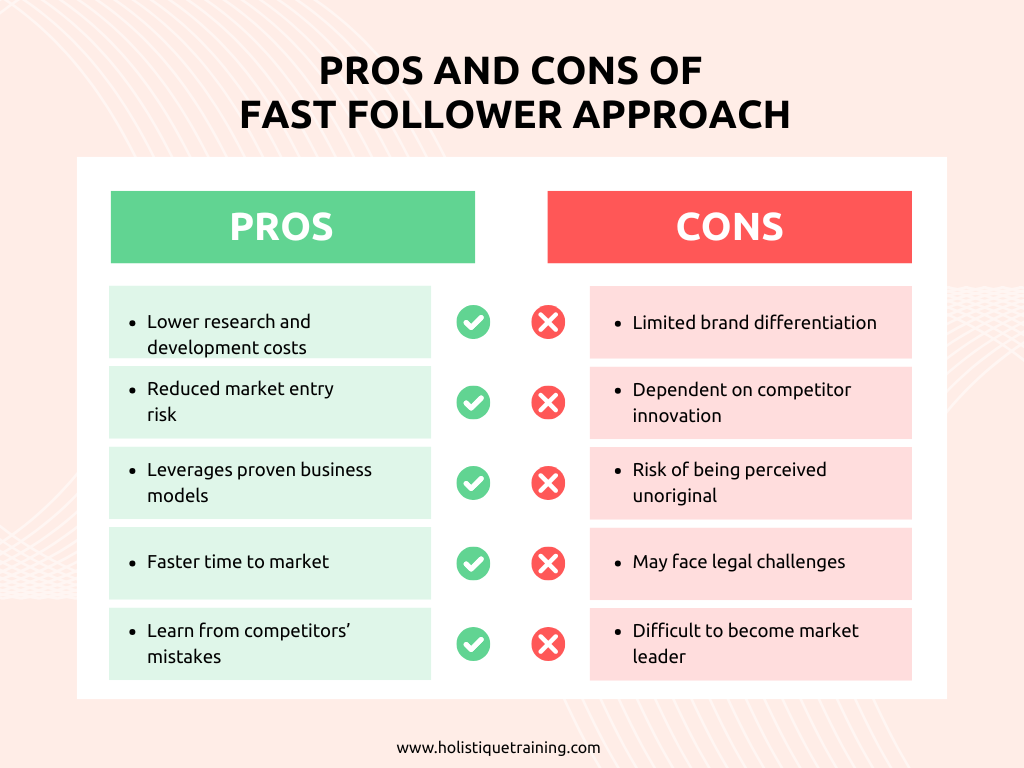
Market Saturation:
By the time fast followers enter the market, it may already be saturated with similar products. This saturation can make differentiation difficult, as consumers may struggle to see the unique value in the fast follower's offerings. To succeed, fast followers must find innovative ways to stand out and communicate their unique selling propositions clearly.
Dependency on First Movers:
Relying on the innovations of others can limit a company’s own innovative capabilities. Fast followers may find themselves trailing behind if they do not invest in their own research and development. This dependency can lead to a lack of original ideas and hinder long-term growth and sustainability.
Short-Term Focus:
The fast follower approach can sometimes lead to a short-term focus on immediate gains rather than long-term strategic growth. Companies may prioritize quick wins over building a sustainable innovation pipeline. This focus can be detrimental in rapidly evolving markets, where continuous innovation is essential for maintaining competitiveness.
In summary, while the fast follower approach offers several advantages, including lower risk and cost efficiency, it also comes with challenges related to brand perception, market saturation, and dependency on first movers. Organizations must weigh these pros and cons carefully to determine whether this strategy aligns with their goals and market conditions.
How to Implement the Fast Follower Approach
Implementing the fast follower approach involves a strategic framework that allows organizations to capitalize on the innovations of first movers while minimizing risks. Below are key steps to effectively adopt this strategy.
1. Conduct Market Research
- Analyze Competitor Offerings: Start by thoroughly researching the products and services introduced by first movers. Understand their features, pricing, and marketing strategies. Identify what works well and what doesn’t, paying attention to customer feedback and market reception.
- Identify Market Gaps: Look for gaps or unmet needs in the market that first movers may have overlooked. This could include enhancements to existing products, new features, or improvements in customer service. Understanding these gaps will help you position your offering more effectively.
2. Develop a Unique Value Proposition
- Differentiate Your Offering: Craft a unique value proposition that clearly communicates how your product or service improves upon or complements those of first movers. Focus on specific benefits that resonate with consumers, such as better quality, enhanced features, or superior customer support.
- Leverage Insights: Use insights gained from competitor analysis and customer feedback to refine your offering. Ensure that your value proposition addresses the pain points identified during your research, setting you apart from competitors.
3. Build Agility into Your Organization
- Foster aCulture of Innovation: Encourage a culture that values creativity and quick decision-making. Empower teams to experiment with new ideas and adapt to changing market conditions. This agility will enable your organization to respond swiftly to emerging trends and consumer preferences.
- Streamline Processes: Optimize product development and marketing processes to reduce time-to-market. Implement agile methodologies that allow for iterative development and rapid prototyping. This approach will enable you to launch products faster and adjust based on market feedback.
4. Invest in Marketing and Branding
- Create a Strong Brand Identity: Develop a compelling brand identity that resonates with your target audience. Highlight the unique aspects of your offering and communicate your value proposition effectively through various marketing channels.
- Engage with Consumers: Utilize social media, content marketing, and other platforms to engage directly with consumers. Gather feedback to understand their preferences and concerns better. Building strong relationships with your audience can enhance brand loyalty and increase market share.
5. Leverage Partnerships and Collaborations
- Form Strategic Alliances: Consider forming partnerships with other organizations, such as suppliers, technology providers, or even complementary brands. Collaborations can provide access to valuable resources, expertise, and technologies that can enhance your offering.
- Utilize External Knowledge: Engage with industry experts, attend conferences, and participate in networking events to gain insights into market trends and innovations. This external knowledge can inform your strategy and help you stay ahead of the competition.
6. Monitor Performance and Adapt
- Track Key Metrics: Establish key performance indicators (KPIs) to measure the success of your fast follower strategy. Here are some KPIs you could monitor:
KPI | Description |
Time-to-Market | Measures how quickly your product enters the market |
Market Share Growth | Tracks the percentage increase in industry presence |
Customer Acquisition Rate | Monitors how effectively you're gaining new customers |
Revenue from New Products | Evaluates financial success of recently launched offerings |
Competitive Benchmarking | Compares performance against industry leaders |
- Be Prepared to Pivot: Stay flexible and be ready to pivot your strategy based on performance data and market changes. If certain aspects of your offering are not resonating with consumers, be willing to make adjustments quickly to better meet their needs.
7. Continuous Learning and Improvement
- Learn from Competitors: Continuously analyze the strategies and outcomes of both first movers and other fast followers. Identify best practices and lessons learned to refine your approach over time.
- Invest in R&D: Allocate resources for ongoing research and development to ensure your offerings remain competitive. Staying ahead of trends and continuously improving your products will help maintain your market position.
In summary, implementing the fast follower approach requires a strategic mindset focused on agility, market awareness, and consumer engagement. By conducting thorough research, developing a unique value proposition, fostering organizational agility, and leveraging partnerships, companies can effectively position themselves in the market. Continuous monitoring and adaptation will further enhance the likelihood of success in a competitive landscape.
Fast Follower vs. First Mover: Key Differences
Understanding the differences between fast followers and first movers is crucial for businesses considering their innovation strategies. Here are some key distinctions:
1. Risk Tolerance
- First Movers: Often take on higher risks by entering markets with untested concepts or technologies. They invest heavily in R&D and face the uncertainty of consumer acceptance.
- Fast Followers: Tend to have a lower risk profile, as they learn from the experiences of first movers and can make adjustments based on market feedback.
2. Innovation Strategy
- First Movers: Focus on groundbreaking innovations and creating new markets. Their strategy is centered around being the first to introduce a novel idea.
- Fast Followers: Emphasize incremental innovation, building upon existing ideas to enhance products or services and meet customer needs more effectively.
3. Market Timing
- First Movers: Enter the market early, striving to establish brand recognition and customer loyalty before competitors arrive.
- Fast Followers: Wait for the market to stabilize and demand to be established, allowing them to enter with a refined offering.
4. Resource Allocation
- First Movers: Allocate significant resources to R&D and marketing to create awareness and educate consumers about their new products.
- Fast Followers: Can allocate resources more efficiently, focusing on marketing enhancements and operational efficiencies rather than initial product development.
5. Brand Perception
- First Movers: Often benefit from a strong brand identity as pioneers, which can lead to consumer loyalty.
- Fast Followers: May face challenges in brand perception, as they can be viewed as imitators rather than innovators.
Here’s a table that summarizes the key differences:
Aspect | Fast Follower Approach | First Mover Strategy |
Risk Level | Lower risk due to learning from first movers' experiences | Higher risk associated with pioneering new products |
Market Research | Relies on extensive market research and competitor analysis | Requires significant investment in R&D and market education |
Innovation | Focuses on refining existing products and filling market gaps | Prioritizes innovation and introducing new concepts |
Cost Structure | Generally lower initial costs, leveraging existing market insights | Higher costs due to R&D, marketing, and consumer education |
Brand Loyalty | Builds loyalty by offering improved or complementary products | Establishes strong brand loyalty as the original innovator |
Pros and Cons of Being a First Mover
Being a first mover in the market can offer significant advantages, but it also comes with its own set of challenges. Understanding these pros and cons is essential for businesses considering whether to pursue a first mover strategy.
Pros
Market Leadership:
First movers have the opportunity to establish themselves as the leaders in their respective markets. By being the first to introduce a product or service, they can set industry standards and define consumer expectations. This leadership position can create a significant competitive advantage, as they can shape the market dynamics and influence trends. For example, companies like Apple and Amazon have successfully positioned themselves as market leaders by being among the first to introduce innovative products and services.
Brand Loyalty:
First movers often enjoy a strong brand loyalty among early adopters who are willing to try new products. This loyalty can translate into a dedicated customer base that is less likely to switch to competitors. By establishing a strong emotional connection with consumers, first movers can cultivate long-term relationships that contribute to sustained revenue. For instance, brands like Coca-Cola and Nike have built loyal followings by being pioneers in their respective industries.
Higher Profit Margins:
First movers can benefit from higher profit margins due to the lack of direct competition in the early stages of market entry. With no competitors offering similar products, they can set premium prices and capture a larger share of the market. This can lead to significant financial gains, especially if the first mover can establish a strong brand presence before competitors enter the fray.
Control Over Resources:
First movers have the advantage of securing critical resources, such as patents, distribution channels, and supplier relationships. By establishing these resources early on, they can create barriers to entry for potential competitors. For example, a first mover in a technology sector may patent innovative features, making it difficult for fast followers to replicate their success without incurring additional costs.
Influence on Market Trends:
First movers have the power to influence market trends and consumer behaviors. By introducing new concepts and ideas, they can shape the way consumers perceive and interact with products. This influence can lead to a first mover advantage that extends beyond the initial product launch, as they can continue to drive innovation and set the agenda in their industry.
Cons
High Risk:
One of the most significant downsides of being a first mover is the high level of risk involved. First movers often invest substantial resources in research and development, marketing, and product launch, with no guarantee of success. If the product fails to gain traction or if consumer preferences shift, first movers can face significant financial losses. This risk can be particularly pronounced in rapidly changing industries, where consumer tastes and technologies evolve quickly.
Costly R&D:
First movers typically incur high research and development costs as they seek to innovate and create new products. These costs can strain financial resources, especially for smaller companies or startups. If the product does not perform as expected, the financial burden of R&D can have lasting repercussions on the company’s viability.
Market Education:
First movers often bear the responsibility of educating consumers about their new products. This can be a time-consuming and costly process, as it requires significant marketing efforts to inform potential customers about the benefits and features of the offering. If the market is not adequately educated, it can lead to slow adoption rates and limited sales.
Vulnerability to Fast Followers:
Once a market is established, first movers can become vulnerable to fast followers who enter with improved products or services. Fast followers have the advantage of learning from the first mover’s successes and failures, allowing them to refine their offerings and capture market share more effectively. This vulnerability can erode the first mover’s competitive edge over time.
Short-Term Focus:
The pressure to innovate and maintain market leadership can lead first movers to focus on short-term gains rather than long-term sustainability. This short-term focus can result in a lack of investment in future innovation or diversification, leaving the company exposed to shifts in market dynamics. As competitors enter the market, first movers may find it challenging to adapt and evolve, risking their long-term viability.
In summary, while being a first mover can provide significant advantages such as market leadership, brand loyalty, and higher profit margins, it also comes with substantial risks, including high costs, market education challenges, and vulnerability to competition. Companies must carefully weigh these pros and cons when considering their market entry strategies, ensuring that they are prepared to navigate the complexities of being a first mover in a competitive landscape.
Which Approach is Best for You?
Deciding whether to adopt a fast follower or first mover approach depends on various factors, including your industry, company resources, and overall business strategy. Here are some considerations to help you determine the best fit for your organization:
1. Market Dynamics
- Industry Characteristics: Assess the nature of your industry. In fast-paced, technology-driven sectors (like software or consumer electronics), being a first mover can offer significant advantages due to rapid innovation cycles. Conversely, in more stable industries (like utilities or basic consumer goods), a fast follower approach may be more effective, allowing companies to learn from the experiences of first movers.
- Consumer Behavior: Understanding consumer behavior is crucial. If your target market is open to new ideas and innovations, a first mover strategy may resonate well. However, if consumers are more risk-averse or prefer established products, a fast follower approach could be advantageous, allowing you to capitalize on proven concepts.
2. Resource Availability
- Financial Resources: Evaluate your financial capacity to support either approach. First movers often require substantial investment in research and development, marketing, and product launch. If your organization has limited resources, a fast follower strategy may be more feasible, allowing you to minimize risks and costs by building on existing market knowledge.
- Human Capital: Consider the skills and expertise of your team. A first mover strategy often requires strong capabilities in innovation and market analysis. If your organization excels in these areas and has a culture of creativity, pursuing a first mover approach may be appropriate. Conversely, if your strengths lie in execution and operational efficiency, a fast follower strategy might align better with your capabilities.
3. Risk Tolerance
- Risk Appetite: Assess your organization’s risk tolerance. If your company is willing to take calculated risks and invest in pioneering new ideas, a first mover approach may be suitable. However, if your organization is more conservative and prefers to mitigate risks, the fast follower strategy can provide a safer path to market entry by learning from the experiences of others.
- Long-Term vs. Short-Term Focus: Consider whether your organization prioritizes long-term innovation and brand establishment or short-term market gains. First movers often focus on establishing a brand and market presence, while fast followers may concentrate on capturing immediate market share. Align your chosen approach with your strategic goals.
4. Competitive Landscape
- Competitor Analysis: Analyze the competitive landscape. If there are already established players in the market, entering as a first mover may be challenging. In such cases, a fast follower approach can allow you to identify gaps in the market and position your offerings effectively. Conversely, if you have a unique advantage that allows you to disrupt the market, being a first mover could be beneficial.
- Potential for Imitation: Consider the likelihood of competitors imitating your product or service. If you believe that your innovations can be easily replicated, a first mover strategy may expose you to risks. In such scenarios, being a fast follower may allow you to capitalize on existing market demand without facing the same level of competition.
5. Innovation Capability
- R&D Strength: Evaluate your organization’s research and development capabilities. If you have a strong R&D team capable of driving innovation, pursuing a first-mover strategy may be advantageous — especially for firms offering modern solutions like Web3, AI services, and other emerging technologies. On the other hand, if your organization excels at refining and improving existing products, a fast follower approach would leverage those strengths effectively.
- Speed to Market: Consider how quickly you can bring a product to market. If your organization can rapidly develop and launch new offerings, being a first mover may be a viable option. However, if your processes are slower, a fast follower strategy may allow you to enter the market with improved products that meet consumer needs more effectively.
6. Customer Engagement
- Feedback Mechanisms: Assess how well you can engage with customers and gather feedback. If your organization has strong mechanisms for understanding customer preferences and adapting to their needs, a fast follower approach may allow you to create products that better align with market demands. Conversely, if you can effectively drive consumer education and engagement, a first mover strategy may be more suitable.
Ultimately, the decision between being a first mover or a fast follower should be based on a comprehensive analysis of your organization’s strengths, market conditions, and strategic goals. There is no one-size-fits-all answer; the best approach will vary depending on your unique circumstances. By carefully considering the factors outlined above, you can make an informed decision that aligns with your vision and maximizes your chances of success in the marketplace.
Conclusion
The fast follower approach offers a compelling alternative to the traditional first mover strategy, providing companies with the opportunity to innovate while mitigating risks. By observing market trends and learning from the experiences of first movers, fast followers can enhance existing products and capture market share more efficiently. However, both strategies have their advantages and challenges, and the best approach ultimately depends on a company’s unique circumstances.
As the business landscape continues to evolve, organizations must remain agile and responsive to change. Whether you choose to be a fast follower or a first mover, embracing innovation and understanding market dynamics will be essential for sustaining growth and success in today’s competitive environment. By carefully evaluating your options and aligning your strategy with your organization’s strengths, you can position your business for long-term success and relevance in a rapidly changing world.
